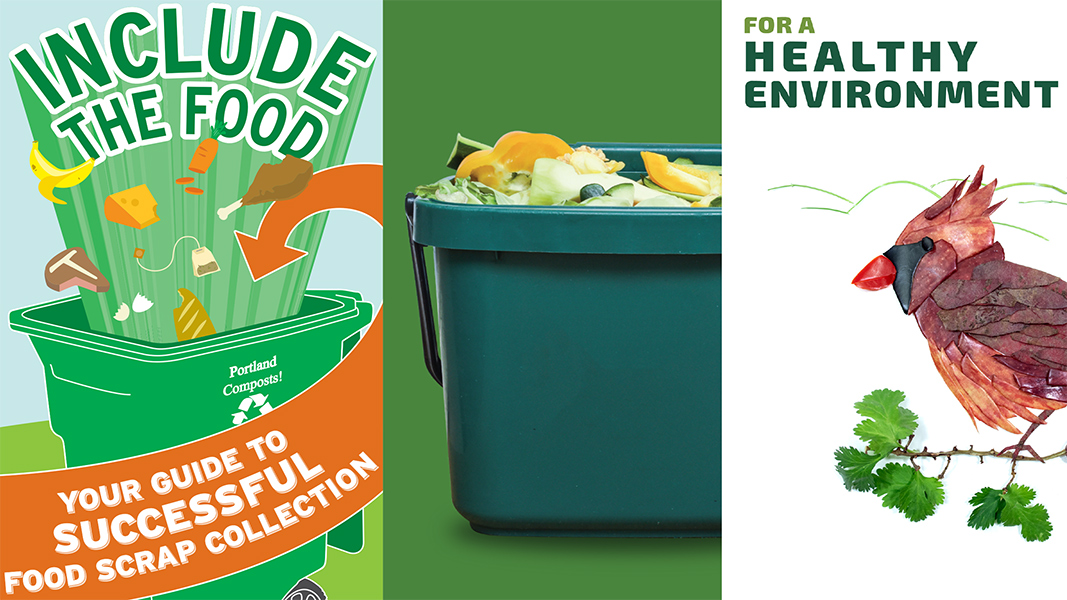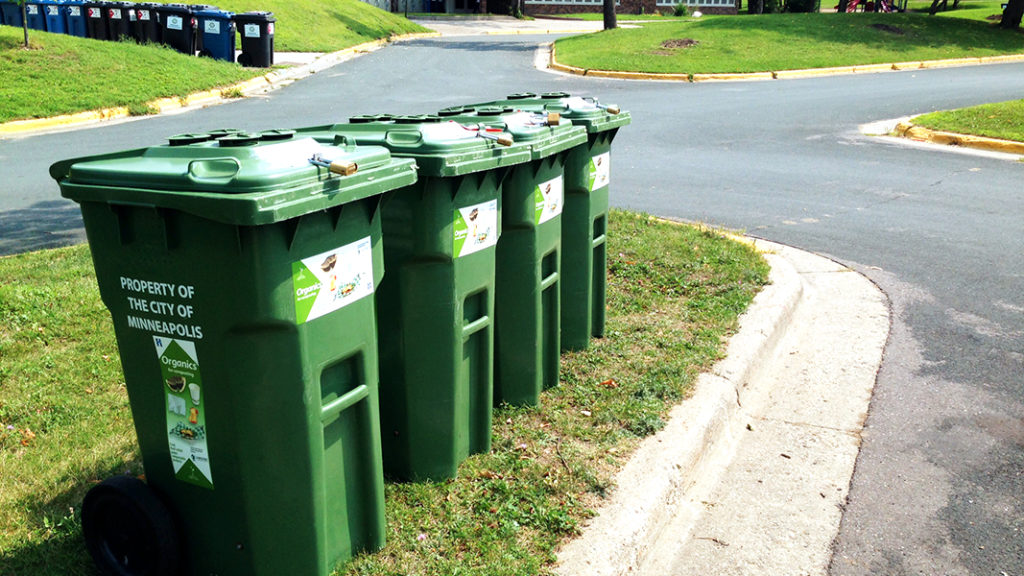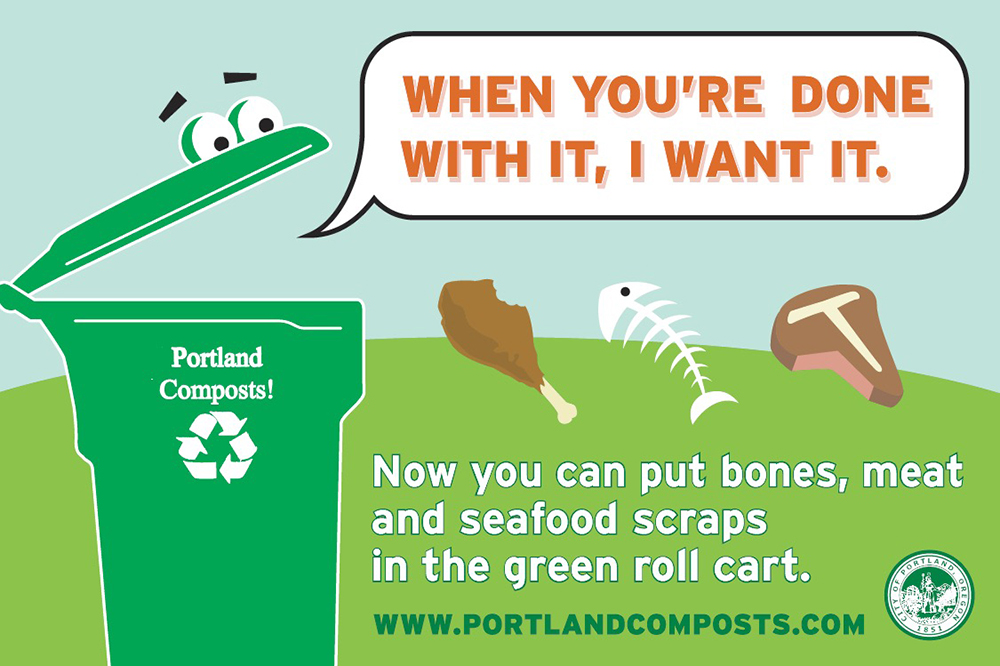Nora Goldstein
In mid-June, the U.S. Environmental Protection Agency released a toolkit to assist and encourage communities to compost unavoidable residential food scraps. Composting Food Scraps in Your Community: A Social Marketing Toolkit is a resource for states, territories, local governments, tribes, and nongovernmental organizations wanting to create residential food scraps collection and composting campaigns in their communities. The goal of the toolkit is to provide a framework for planning and implementing effective campaigns. It can be used by agencies and organizations that want to launch a new food scraps composting program; increase participation in an existing program; or reduce contamination in the food scraps collection stream.
C+C , Inc., a social marketing consultancy in Seattle, Washington, was contracted by EPA to create the toolkit. Sample campaign materials that are part of the toolkit were provided by King County Solid Waste Division, Washington; Vermont Department of Environmental Conservation; City of Portland Bureau of Planning and Sustainability (Oregon); and Metro Vancouver Regional District, British Columbia, Canada. To inform this Toolkit, EPA interviewed six agencies that have implemented collection and composting campaigns and reviewed relevant research and campaign materials.
The guidance is rooted in the principles of social marketing, a discipline that seeks to change behaviors for the good of society, communities, and people. Social marketing uses research-informed strategies to overcome the barriers that are preventing a specific behavior by providing people with personal, relevant motivators to act. The aim of the U.S. EPA toolkit is to help communities and partners create food scraps composting campaigns by applying the social marketing planning process to their individual needs. The social marketing campaign described in the toolkit has eight steps, starting with defining your purpose, goals, and objectives, and ending with a plan for your evaluation strategy. This article is comprised of excerpts from the Toolkit and highlights elements of the eight-step process.
#1 Define purpose, goals and objectives
Step 1 should be tailored to the specifics of your composting campaign — making sure you have defined the purpose, goals, and objectives for your community before moving further into the planning process. Briefly, the purpose addresses why the campaign is being created, e.g., is it to reduce landfill methane emissions? Goals are what you’re trying to achieve in the short- and long-term, e.g., increase participation in a voluntary food scraps collection program. Objectives are what needs to occur to achieve the goal and should be measurable, focus on the desired behavior changes, and be as specific as possible (i.e., By who? How much? By when?).
#2 Choose your priority audiences
Priority audiences are groups of people who are likely to be receptive (persuadable) to changing their behaviors. Define specific priority audiences so that you can choose messaging and communications channels that reach and resonate with each of them — versus trying to reach everybody. For example, consider audiences that already have access to curbside collection services. Factors to consider when choosing the priority audience mix include size of the audience, their impact on the issue, and their receptivity. Questions to ask to make these determinations are: Does the size of the audience include large enough segments to be able to maximize your campaign’s impact? Does this audience have a lot of compostable materials that are currently going into the garbage? What is the likelihood of positive receptivity to composting messaging among the audience group?
The next step is to create a profile of each priority audience. What do you know about their demographics (e.g., Who are they? Where do they live?) and their psychographics (e.g., What is important to them? What are their values and beliefs?). Considering equity as a community goes through this process is highlighted in the toolkit. Evaluate factors that could impact people’s access to and response to a composting campaign, such as preferred languages or the cost or access to participating.
#3 Identify desired behavior changes
Desired behavior changes promoted through your campaign interventions should fall within the parameters of social marketing behavior change principles, which specify that a behavior should be a simple, clear and singular action that the audience can take. It is important to launch the campaign with just a few behaviors to start, and factor in additional behaviors over time.
The toolkit authors point out that there may be several steps that your audience needs to take before achieving the end desired behavior change. Each step could have its own barriers and motivators. If this is the case, try mapping the steps in a behavior chain and then identify where you need to start with your audience. Example behaviors include: Sign up for curbside collection of food scraps; Collect food scraps in your kitchen; Use a kitchen countertop container to collect your food scraps for composting; Do not put plastic in your compost bin; Remove produce stickers before putting scraps in your compost bin.
#4 Map barriers, benefits & motivators
Based on priority audiences identified in Step #2 and chosen behaviors outlined in Step #3, the next step is to analyze the barriers that may prevent the priority audience segments from doing the desired behaviors — and the possible benefits and motivators that could overcome those barriers (see table below, excerpted from the toolkit). These elements are defined as follows:
- Barrier: Anything that reduces the probability of the priority audience engaging in the desired behavior, e.g., not having tools that make it more convenient, such as a countertop bin and compostable bags, or the ick factor.
- Benefit: The benefits that will be delivered to the audience if they practice the behavior (what is in it for them?) Examples are taking action to address climate change and participating in composting, which many people view as a tangible action to help the environment.
- Motivator: What will motivate the audience to act to change their behavior? These may be a feeling of “doing the right thing,” or saving money by being able to use a smaller trash cart for a reduced fee.
To plan the campaign, map the barriers, benefits, and motivators for each priority audience and chosen behavior changes. One key to this exercise is to pick the top one to two items in each category to help focus the message strategy for the campaign. As a reality check, make sure the benefits and motivators are strong enough to overcome the barriers to each behavior. If they are not, either increase the benefits and motivators or pick a new behavior. Examples are provided in the toolkit on how to do this analysis.
#5 Recruit partners
Developing partnerships is a key strategy that can be employed to increase the impact of the campaign. Partners can amplify each other’s efforts to create greater change. The first step is to develop a prioritized list of potential partners, e.g., ones that may have overlapping priority audiences or can bring something of value to the table. If the parties are aligned, the last step is to prepare a memorandum of understanding to ensure accountability on both sides of the partnership. Potential partners include waste haulers, schools, community composters and elected officials.
#6 Develop messages and materials
In social marketing campaigns, messages should help drive the desired behavior changes by presenting compelling calls to action and overcoming audience barriers by emphasizing the benefits of taking that action. “An effective messaging strategy for your campaign will avoid the issue of message clutter: when campaigns deliver too many messages at once, the audience can feel overwhelmed, which can ultimately lead to inaction,” explains C+C. “To avoid this dynamic, it is recommended that campaign materials each only focus on one message at a time with the suite of campaign materials being able to cover both awareness messages and multiple behaviors.”
One of the recommended first steps to defining the message strategy is to map where the priority audiences sit on the behavior change continuum. C+C, Inc. maps out (see figure) the behaviors that help support a program, starting with awareness, understanding and relevance. “On this continuum, awareness is a necessary first step before behavior changes can be addressed,” says C+C. “If people are not aware of an issue, they are unlikely to engage with specific behavior change messages. Once they are aware and have a level of understanding, then you need to create personal relevance for them by helping them understand they have potential to reduce the amount of food they waste.” Subsequent behaviors are differentiation, satisfaction, and loyalty. Messaging examples from the collaborating programs are provided.
Source: Metro Vancouver Regional District, British Columbia, Canada
#7 Create an implementation plan
This step helps determine how to deliver your campaign’s messages to your priority audiences. Options include using existing campaign materials accessible via the new toolkit or creating new materials based on the strategic social marketing framework developed as part of Steps 1-6. If your priority audience includes community members who prefer a language other than English, you will want to transcreate your campaign materials, i.e., go beyond literal translation and consider both language and the cultural context within which it is interpreted.
Elements of the implementation plan include website development, media planning and buying, media relations, events, and social media influencers. “Timelines for implementation will vary by community based on the resources you have available,” note the authors. “However, it is good practice to think about running promotional windows where you have concentrated campaign activity for a six-to-eight-week period separated by times with less activity. This allows you to spread your resources and audience engagement over a longer period.”
#8 Plan your evaluation strategy
The campaign evaluation strategy should consider inputs, outputs, outcomes, and overall campaign impact. It is important to note that most communities will not be able to fully evaluate all four of these factors. Look at the data that is available or could be gathered for your community and create an effective evaluation strategy using the resources available. The factors are defined as follows:
- Inputs are the resources (budget, staff time, etc.) invested in the campaign.
- Outputs are the reach and engagement of the campaign (people reached through ads, events, partnership results, social media engagements, etc.).
- Outcomes are what happen as a result of your campaign — the amount of food waste captured by organics collection or the amount diverted from the garbage/landfill, the number of people who signed up for service or started putting food scraps in their collection bins, and changes in awareness and attitudes related to participation in the program. This can be done through surveys that track awareness, attitudes and behaviors, and waste audits.
- Impacts map back to the campaign’s purpose (e.g., reducing greenhouse gas emissions, diverting landfill waste, etc.). Extrapolate these data points based on estimates of food scraps diverted from the waste stream that you are able to calculate as an outcome measurement.
Access to the toolkit and downloadable customizable collateral are available at this link. The guidance is clear, concise and actionable — and strongly recommended by BioCycle!

















